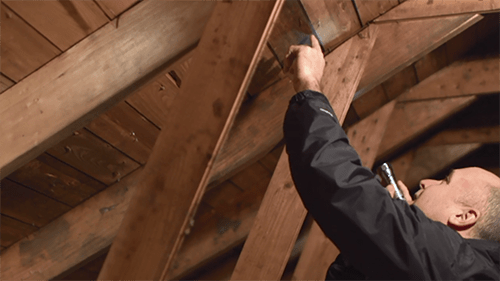Is Your Roof Ready for Winter? 4 Winter Roofing Tips
11/29/2016
It’s that time of the year again–time to prepare for Colorado winter weather. 4 winter roofing tips to ensure your roof is in good shape going into the season–avoid damage, save money.
Every year, you prepare for winter: your car, your lawn, your boat– but what about your roof? Winter is hard on your roof, and without regular maintenance, you could miss signs of trouble and end up facing preventable roof damage that could cost you a lot of money. So, once you’ve dragged the last of those lawn chairs into the shed, take some time to give your roof a thorough inspection.

Safety First. Getting on a roof is dangerous and it’s always best to leave it to the professionals. Fortunately, most of the items on the winterization checklist can be done from atop a secured ladder (always be sure to follow ladder safety guidelines). If you are uncomfortable on a ladder, have the inspection performed by a reliable, credentialed roofing contractor* – not only does it ensure your personal safety, but you will have an expert eye conducting the inspection! Here are the major areas that should be addressed during a pre-winter roof assessment:
Visual Check. Start with a simple visual check of your roof for any damage or potential weak spots. Look for cracked, missing or discolored shingles or sagging rooflines – there are signs of trouble.
Roof Flashings — or metal pieces that protect dormers, chimneys, skylights or other irregular roof areas — should also be checked for cracks, missing pieces or damage. Failed flashing is one of the most common culprits for leaks.
Gutters. The next step is to clean the rain gutters. Again, some old-fashioned manual work is in store as you remove leaves, sticks, and other objects that could impede water flow and cause a buildup of debris on your roof. Also, check and clear the downspouts and drains to ensure an unobstructed pathway for stormwater. If you are uncomfortable or unable to do this yourself, you can hire a local company that performs this service.
Attic Check. Grab a flashlight and venture into the attic space. You are looking for areas that have leaked in the past or appear susceptible for leaks going forward. If you see any water staining or find heavy moisture or mold, you will need to have those areas looked at before winter sets in to prevent further damage.
Congratulations – once these steps are done, you have completed your inspection! If you ran into any of the issues above, contact a professional roofing contractor to have a thorough check done while the weather is still fairly dry and mild. If you had a contractor perform your initial inspection, they will provide you with a roof state report and – if necessary – suggested next steps for repairs. While you may not have money set aside in your budget for roof repairs, remember that it will be far less expensive to make the repairs now rather than in the dead of winter or once the damage has spread.
*CertainTeed, North America’s leading building materials manufacturer, highly recommends that homeowners choose a ShingleMaster or SELECT ShingleMaster credentialed roofing contractor for a roof inspection or roof repairs. Companies carrying these education-based credentials are proven professionals who have agreed to follow a contractor code of ethics set forth by CertainTeed.
